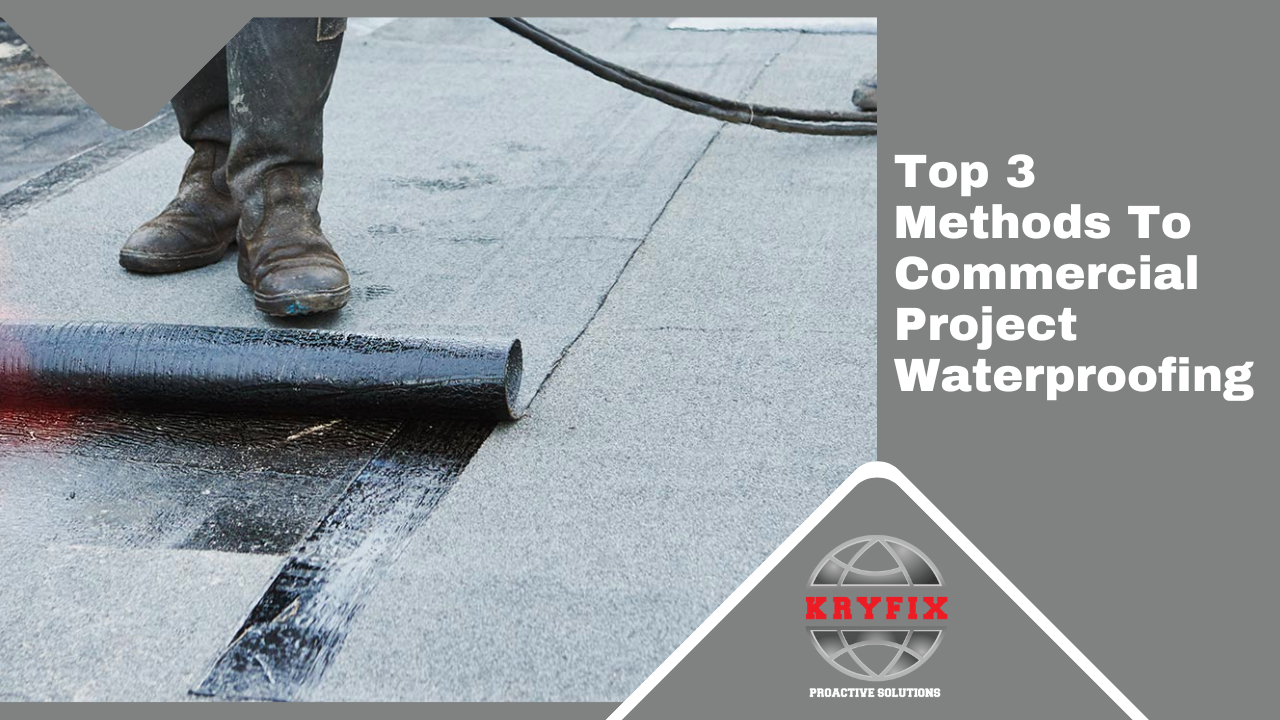
Background
Waterproofing is a major component of commercial fit outs & building projects which builders tend to take for granted most often. Many individuals are privy to the idea that concrete structures are impenetrable by water, however this is simply not true. Listed below in this article are the top 3 most beneficial methods of waterproofing for commercial projects available in the present day market.
1. Cementitious Waterproofing
An extremely popular method of waterproofing for commercial fit outs & buildings is through the use of cement. Cementitious waterproofing is quite often the best option for waterproofing regions which contain a considerable amount of moisture, e.g. around toilets & showers. Cementitious waterproofing therefore becomes an extremely sturdy solution & is best used for the interior of a building, which is due to the fact that the change in territory will not cause any growth or shrinkage. It’s important to note that in cementitious waterproofing, it becomes essential to apply an external protective coating over the waterproofed area as cementitious waterproofing systems do not provide UV resistance. A product such as KGM-700 is ideal for these projects as it is an extremely reliable, two-part flexible polymer cementitious membrane. This product cures to provide builders with dependable waterproofing protection in a wide range of positive & negative application areas.
2. Liquid Membrane Waterproofing
Liquid membrane waterproofing is another extremely popular method which typically consists of 3 layers of coating that provide an extremely tight layer of protection beside flexible membranes. This technique demonstrates to be further advantageous than cementitious waterproofing in the cases of outdoor applications. Liquid membrane waterproofing can substantially prolong the materials it is applied on by a large margin. The resourceful nature of this method of waterproofing results in it being able to be sprayed or rolled onto a wide range of surfaces which in turn produces a range of options to select from when waterproofing a commercial fit out.
3. Polyurethane Membrane Waterproofing
The third method is Polyurethane Membrane Waterproofing, which is a highly versatile method of waterproofing that can be applied to flat roof substrates, concrete, cement mortar, & other such cleaned surfaces. These are typical substrates to which polyurethane waterproofing works best with due to its high flexibility, high resistance to weathering & its extreme UV resistance. This method of waterproofing however, requires a professional evaluation of moisture content within concrete slabs as these membrane types are typically sensitive to moisture. A product such as KGM-200 which is a water based polyurethane membrane is an excellent example of this. KGM-200 is designed for both internal & non exposed external applications with its typical areas of use being non exposed roof areas, balconies/decks, water retaining structures, & planter boxes.
Waterproofing applications have proved time & time again to be essential in keeping commercial fit outs & buildings protected from the fluctuating temperatures which are common to the Australian climate. At Kryfix, our team of experienced industry professionals who are highly skilled in finding common waterproofing issues are always ready to help you with finding the most practical method of waterproofing for your project as each method is able to provide individual benefits.
Contact the Kryfix team today on 1800 425 349 or visit the Kryfix website to view our product ranges and project histories along with other such technical information.